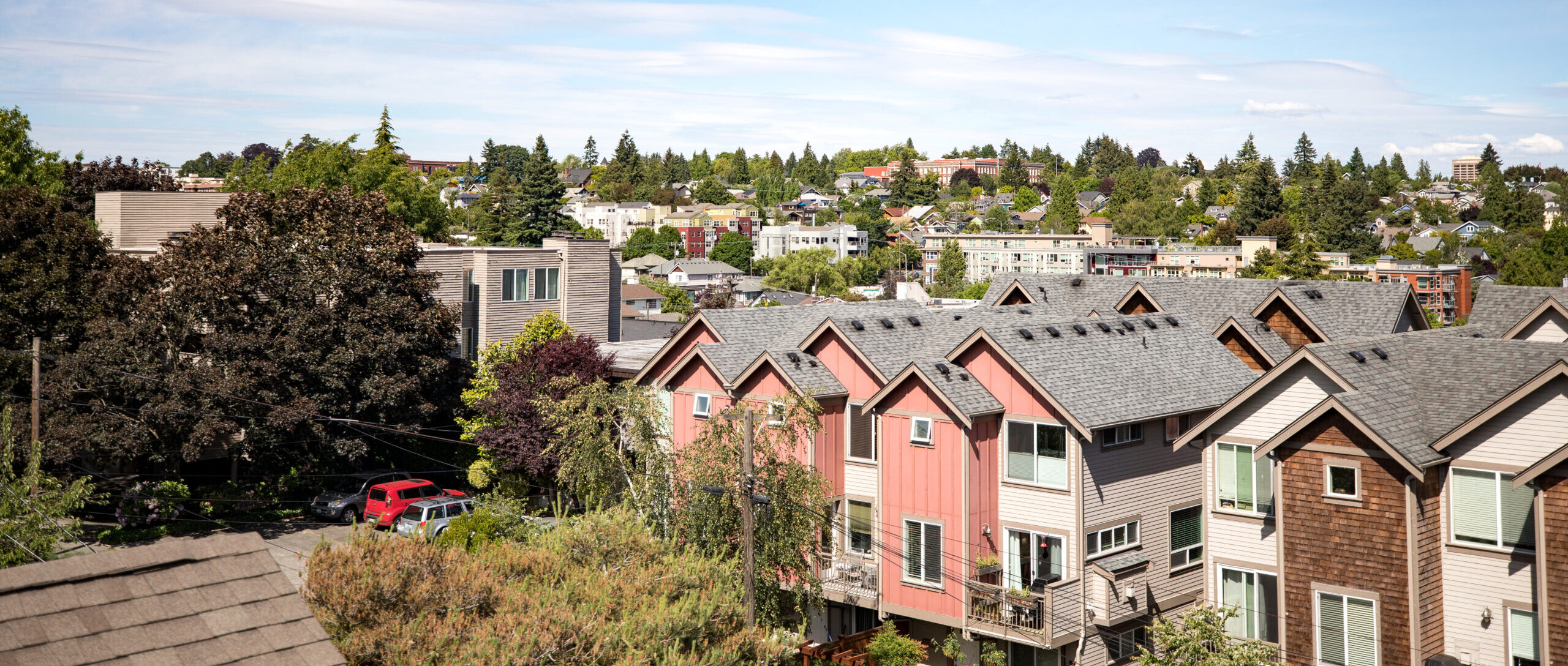This page provides guidance, model ordinances and other resources to assist local jurisdictions in developing middle housing regulations for their communities.
Middle housing is a range of housing types, from duplexes to sixplexes, townhomes, courtyard apartments and cottage housing, intended to be compatible with single-family neighborhoods. The tools provided here are intended to support communities required to include middle housing development options; however, these tools or ideas from these tools may be used by any community looking to include more housing options in their community.
Additionally, accessory dwelling units (ADUs) are required to be provided in every GMA (Growth Management Act) community. While many jurisdictions have adopted ADU regulations, the 2023 legislature provided parameters for how ADUs are regulated, including removing some barriers to development, such as size limitations. The tools provided here guide jurisdictions.
Middle housing guidance
Middle housing is intended to be compatible with single-family neighborhoods while providing more dwelling units per lot. It supports housing affordability and increases housing stock while generally utilizing existing infrastructure. The following documents are intended to guide local jurisdictions in implementing their own middle housing legislation.
- Middle Housing Update Deadlines (PDF)
- Middle Housing Quick Guide (PDF)
- Middle Housing Checklist (Word)
- Middle housing building permit checklist for pre-empted jurisdictions (Word)
- Middle Housing resources on EZView (EZview.wa.gov)
Model Ordinances
- User Guide for Middle Housing Model Ordinances (PDF)
- Model Ordinance for cities 25,000 and over (PDF)
- Model Ordinance for cities under 25,000 (PDF)
For those communities seeking a time extension or the use of the substantially similar alternative for compliance, please utilize the following. The guidance in the fact sheets is interim, until such time the Washington Administrative Code (WAC) update addressing housing bills is adopted in early 2025. The adopted WAC will identify the final alternative pathway review and application processes.
- Time extension to address displacement fact sheet (PDF)
- Time extension due to lack of infrastructure capacity fact sheet (PDF)
- Substantially similar alternative (PDF)
Jurisdictions making an application to Commerce for a time extension certification or substantially similar approval referenced above must complete and submit the following application form and applicable checklist with their application. The check boxes in the application submittal checklists are to be used to confirm that all required information is provided with the application.
Resources
Commerce strives to support your work through providing valuable resources, tools and examples. Please contact us if you need any of the following in an editable format.
Several preemption clauses related to housing development were enacted in the 2023-24 legislative sessions. Refer to the preemptive state laws for infill housing fact sheet (PDF) for detailed information.
The provisions of RCW 36.70A.622 apply to jurisdictions’ off-street parking requirements for any type of residential development or redevelopment, regardless of the nature of the use. This includes, but is not limited to, detached single-family residences, accessory dwelling units, middle housing, multifamily housing, co-living housing, senior housing, assisted living facilities and nursing homes and group homes. The following Fact Sheet is intended to be a support to a jurisdiction review and adoption of the state statute.
For cities and counties planning under the Growth Management Act, these regulations are required to be adopted by their next periodic update for comprehensive plans and development regulations. See WAC 365-196-610 or Commerce’s periodic update page for information on specific deadlines.
Empirical parking study guidance
Both Middle Housing and Accessory Dwelling Unit requirements include options for developing an empirical parking study to determine appropriate parking requirements (outside of the requirements of state statute). The following documents provide guidance to local governments in developing an Empirical Parking Study and in making a certification request to Commerce.
These fact sheets provide a high-level summary related to proportional residential changes to impact fees and system development charges. Detailed guidance for calculating proportional fees is expected to be issued in the Spring of 2025.
Neighborhood infill development guidance addresses potential barriers to the development of neighborhood infill housing, provides examples of proactive solutions, and provides resources for planners to lead discussions with service providers.
- Neighborhood Infill Guidance – Related Disciplines (PDF)
The Neighborhood Commercial Fact Sheet was developed at the request of cities, to encourage commercial opportunities compatible with neighborhoods. Permitting neighborhood commercial goes hand-in-hand with increased allowances for residential density. Additionally, it can help facilitate infrastructure improvements. - Neighborhood Commercial Fact Sheet (PDF)
Manufactured/mobile home communities (MHCs) are residential areas that house multiple manufactured or mobile homes with shared infrastructure and amenities.
As communities across the state plan for housing that meets the needs of all income segments, they should take a careful look at this naturally occurring source of affordable housing.
Commerce has prepared the following guide to help local governments consider preserving this housing type.
- General Middle Housing FAQ (PDF)
- Jurisdictions subject to Chapter 332, Laws of 2023 (PDF)
- Middle Housing Building Types (PDF)
- Middle Housing Lot and Block Models (PDF)
- Middle Housing – Introduction (PPT)
- Middle Housing Study (PPT)
- Middle Housing – What, How and Where? (PPT)
- Middle Housing – How Do We Get More? (PPT)
- Middle Housing Summary of Resources (PPT)
- Middle Housing Presentation Videos
- Middle Housing appraiser engagement FAQ (PDF)
